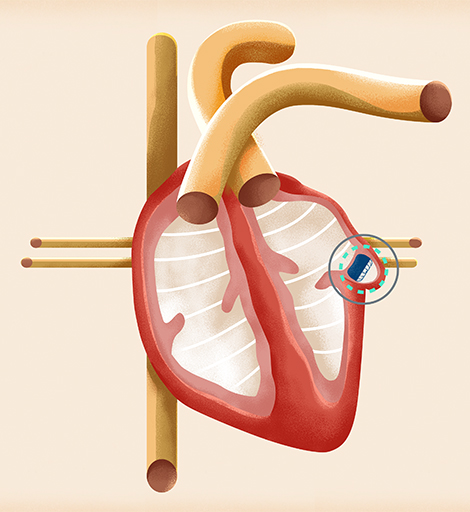WATCHMAN
St. Peter’s Health Partners delivers therapies that fit your busy lifestyle, like the WATCHMAN™ device for atrial fibrillation (Afib). Afib is an irregular heartbeat that typically requires lifelong blood thinner therapy to prevent stroke. But, blood thinners come with side effects that can slow you down.
The WATCHMAN™ is an implantable device that lowers your stroke risk and eliminates the need for lifelong blood thinners. As one of the Capital Region’s leading heart programs, we maintain excellent outcomes.
How Does the WATCHMAN™ Device Reduce Stroke Risk?
Atrial fibrillation Afib causes blood to pool in a tiny pocket of heart tissue called the left atrial appendage (LAA). This increases the likelihood of clotting. If a clot breaks loose and travels through the bloodstream to the brain, it can cause a stroke.
The WATCHMAN™ device lowers your stroke risk by:
- Sealing the LAA opening so blood cells don’t get stuck and clot
- Preventing existing blood clots from leaving the LAA
Why Choose St. Peter’s Health Partners with the WATCHMAN™ Device for Afib?
The WATCHMAN™ device is one of many ways we care for people with Afib and other arrhythmias. Our interventional cardiology services are performed by experienced arrhythmia specialists (electrophysiologists). We tailor therapies, including medical treatments and implantable devices, to give you the best chances for symptom control.
Although the WATCHMAN™ lowers your stroke risk, it does not cure Afib. After your procedure, you continue seeing your electrophysiologist for treatment. If you experience a sudden change in symptoms, we are here for you. Some of our locations offer walk-in clinics where you can see a cardiologist on weekdays without an appointment.
Is the WATCHMAN™ Device Right for Me?
The WATCHMAN™ looks like a tiny acorn. The round flat top closes off the LAA. The bottom is long, wide and made of wire mesh that captures blood clots. You may be eligible for WATCHMAN™ if you have Afib and:
- A heart valve problem is not the cause of Afib.
- You do not wish to continue or cannot take blood-thinning medications.
- There are no abnormal heart structures that would prevent a safe implant procedure.
The WATCHMAN™ Procedure: What to Expect
Electrophysiologists or interventional cardiologists implant the WATCHMAN™ device. Interventional cardiologists specialize in minimally invasive heart procedures, including device implants. If the WATCHMAN™ device is right for you, here’s what to expect:
- You receive general anesthesia, which includes medications that put you to sleep and temporarily block pain.
- The electrophysiologist or interventional cardiologist makes a small incision over the femoral artery in your upper leg and inserts a long thin tube (catheter).
- We use the catheter to guide the WATCHMAN™ device through the artery into the left atrial appendage (LAA).
- Using real-time imaging technology, we ensure the WATCHMAN™ fits snugly and seals the opening of the LAA.
- After securing the device, we remove the catheter and close the incision.
- You stay in the hospital overnight and go home the next day.
- You’ll keep taking blood thinners until tissue grows around the WATCHMAN™ device, forming a permanent seal. This typically takes a few months. We let you know when it is safe to discontinue the medication.

